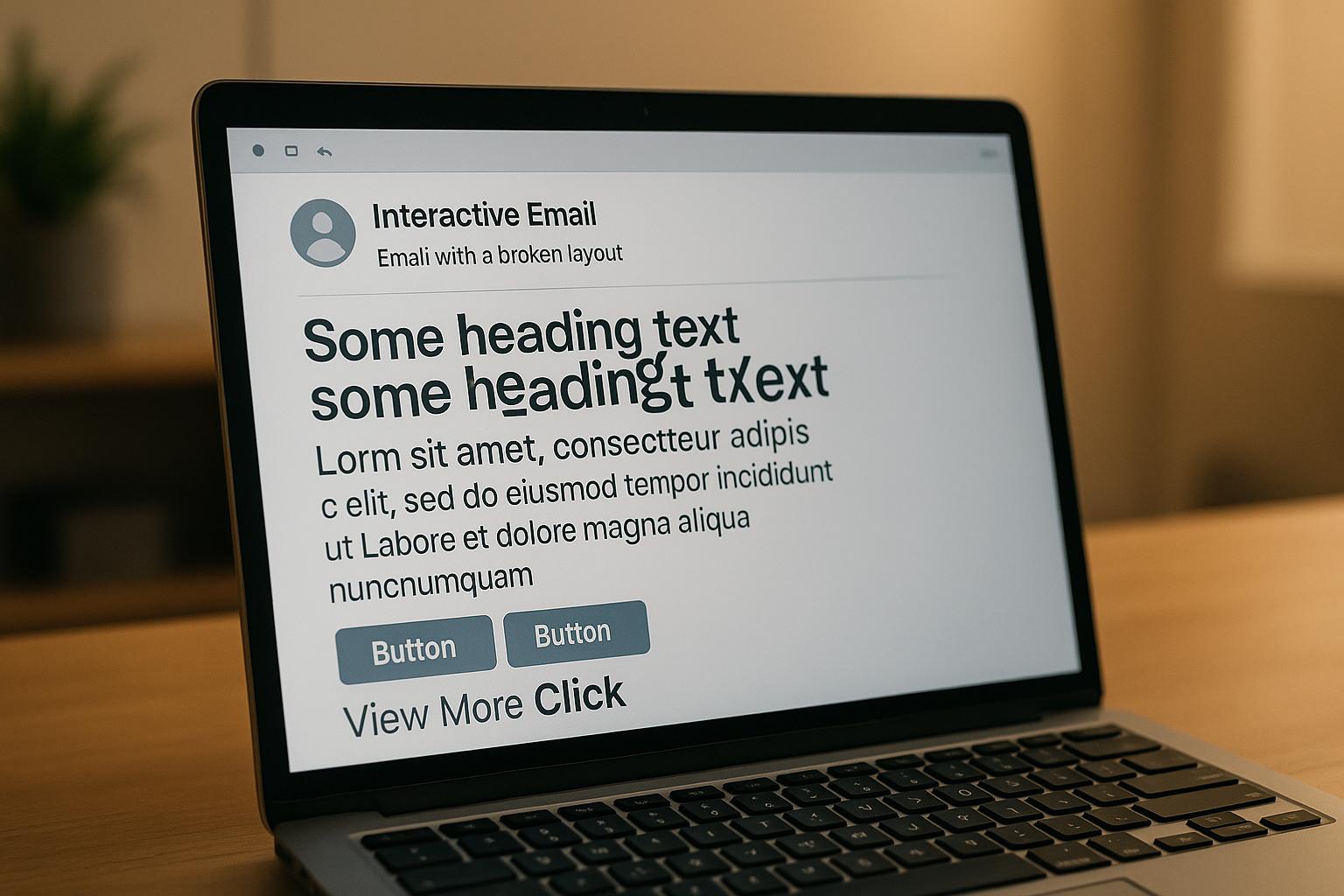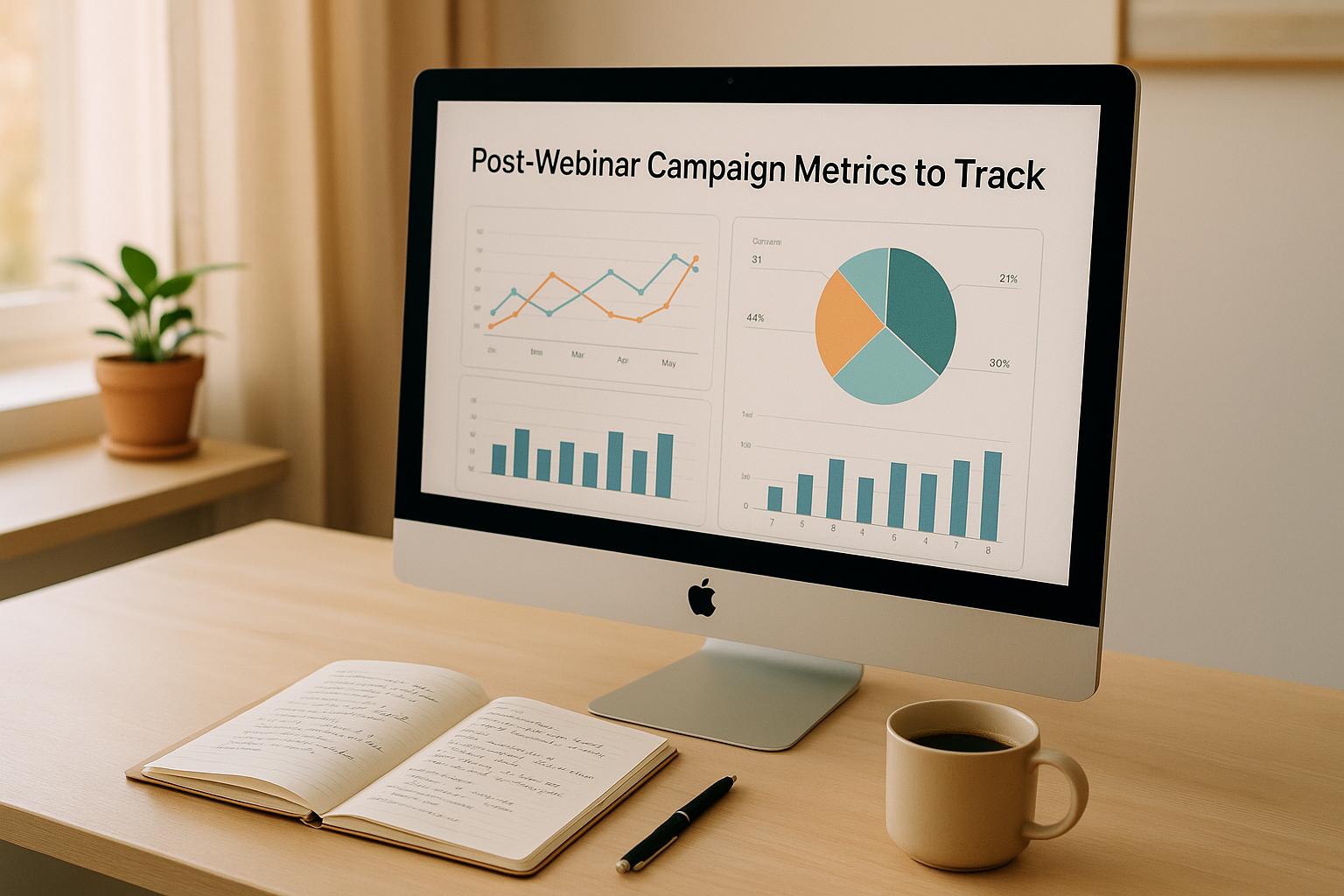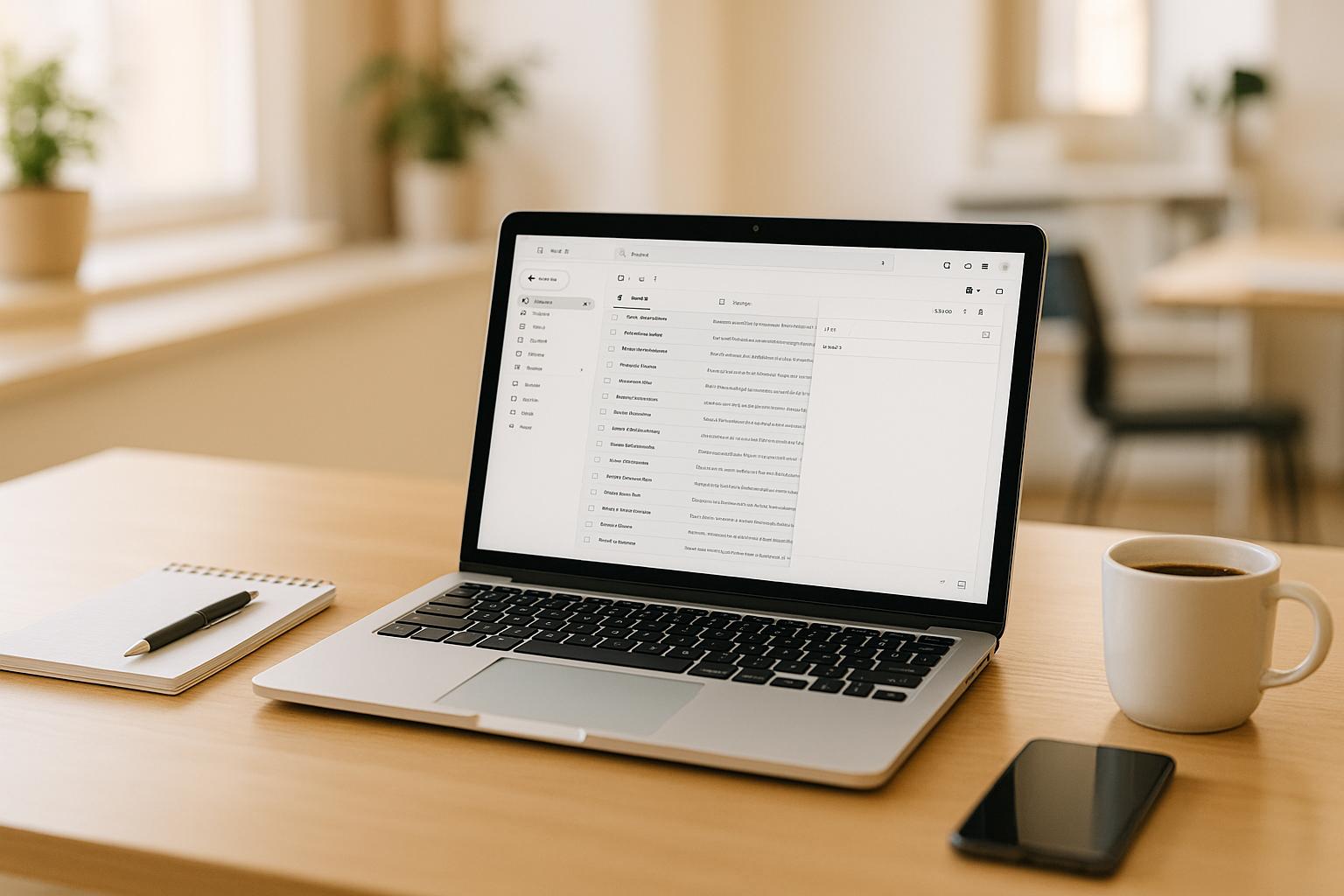Want better email results? Engagement metrics like open rates, click-through rates (CTR), and unsubscribe rates hold the key. Here's a quick guide to using them effectively:
- Open Rates: Shows how appealing your subject lines are. Aim for 15-25%.
- CTR: Measures clicks on links. A strong CTR is 2-5%.
- Bounce Rates: Keep this under 2% by removing invalid addresses.
- Unsubscribes: Track to understand dissatisfaction.
Steps to Improve Campaigns:
- Analyze Engagement Data: Review metrics weekly to spot trends.
- Segment Subscribers:
- Highly Engaged: Active in the last 30 days.
- Moderately Engaged: Active in the last 90 days.
- Inactive: No activity in 90+ days.
- Personalize Content: Tailor emails based on engagement levels.
- Test and Optimize: Use A/B testing for subject lines, layouts, and CTAs.
By focusing on these metrics, you can create targeted campaigns that connect with your audience and drive better results.
Email Segmentation | Best Ways to Segment Your Emails
Key Metrics to Measure Email Engagement
To create targeted and effective email campaigns, it's crucial to track how your audience interacts with your emails. Key metrics provide insights into subscriber behavior, helping you refine your strategy for better results.
What Open Rates Show
Open rates tell you the percentage of recipients who open your emails. This metric is a good indicator of how appealing your subject lines and sender names are. Across industries, an open rate of 15-25% is generally seen as a solid benchmark [1].
Several factors can influence open rates, including the timing of your emails, the wording of your subject lines, the sender's name, and whether your emails are optimized for mobile devices.
Breaking Down Click-Through Rates (CTR)
CTR measures the percentage of recipients who click on links within your email. It reflects how engaging your content and calls-to-action are. A CTR of 2-5% is often considered a strong result [1].
| Metric Type | What It Measures | Benchmark |
|---|---|---|
| CTR | Clicks per delivered email | 2-5% |
| CTOR | Clicks per opened email | 20-30% |
| Mobile CTR | Clicks from mobile devices | 1.5-4% |
Bounce Rates and Unsubscribes: Key Insights
Bounce rates are divided into two types: hard bounces (invalid email addresses) and soft bounces (temporary delivery issues). To keep your bounce rate under 2%, regularly remove invalid addresses and monitor delivery problems [1][5].
Unsubscribes can signal dissatisfaction or disinterest. Keep your list healthy by maintaining up-to-date subscriber information, addressing delivery issues quickly, and periodically cleaning your database.
Steps to Prepare for Targeted Email Campaigns
Collecting and Analyzing Engagement Data
Start by using email marketing platforms with detailed analytics to track your campaigns effectively [3]. These tools let you gather data on key metrics like open rates, click-through rates, and subscriber behavior.
Set a regular schedule for reviewing this data. For example:
- Weekly: Monitor basic metrics like opens and clicks.
- Monthly: Look at subscriber behavior to spot trends or preferences.
- Quarterly: Assess list health, focusing on inactive subscribers and spam complaints.
Dig into the patterns you uncover. If emails sent on Tuesday mornings consistently perform better, adjust your timing. Pay close attention to the content types that generate the most engagement - this will help shape your future email strategy.
Once you've analyzed the data, the next step is to act on it by segmenting your email list based on engagement.
Segmenting Your Email List by Engagement
Use the insights from your data to divide your email list into meaningful groups based on engagement levels. Here are three common categories:
- Highly Engaged: These subscribers have opened or clicked on emails in the past 30 days. They’re great candidates for exclusive offers or urgent updates.
- Moderately Engaged: Subscribers who’ve interacted within the last 90 days. Reconnect with them using value-packed content or surveys to understand their interests.
- At-Risk or Inactive: Those who haven’t engaged in over 90 days. Try re-engagement campaigns or special deals before deciding to remove them.
For more precise targeting, combine different engagement factors. For instance, someone who consistently opens emails but rarely clicks might need different messaging than a subscriber who clicks occasionally but makes purchases.
Automation tools can help you keep these segments updated as subscriber behavior changes. Regularly review and adjust your segments to ensure your targeting stays accurate and aligned with your campaign goals. Tailoring your campaigns to these segments ensures your messages resonate with your audience’s specific needs and habits. [3][4]
Building Targeted Campaigns with Engagement Data
Creating Content for Different Subscriber Groups
Once you've divided your email list into segments, it's time to tailor content for each group's level of engagement. Here's how you can approach it:
For highly engaged subscribers, focus on content that makes them feel valued. This could include:
- Exclusive deals or premium offers
- Detailed, in-depth content
- Special VIP opportunities
For moderately engaged subscribers, aim to spark more interaction with content like:
- Tutorials or educational pieces addressing specific challenges
- Updates on industry trends or insights
- Limited-time offers to encourage quick action
- Invitations to provide feedback
For at-risk or inactive subscribers, take a more strategic approach to win them back:
- Use "We miss you" campaigns with enticing offers
- Send surveys to understand their preferences and interests
- Offer "last-chance" deals to re-engage those on the verge of leaving
Using Personalization to Improve Results
Personalization goes far beyond just adding someone's name to an email. Leverage engagement data to deliver messages that feel tailored to each subscriber. This could include referencing their past purchases, preferred types of content, or even timing emails to when they’re most likely to open them.
To make personalization work effectively:
- Align your content with subscribers' past actions and interests.
- Track which types of content drive the most interaction, and use this information to fine-tune future campaigns.
- Experiment with A/B testing to refine elements such as subject lines, content layout, and calls-to-action for each segment.
Tools listed in the Email Service Business Directory [2][6] can help you scale these efforts. These platforms enable automation of personalized campaigns, track engagement data, and ensure your messages stay relevant without losing that personal touch.
sbb-itb-6e7333f
Tools to Help Manage Engagement-Based Campaigns
Finding the Right Email Service Provider
Engagement-based targeting thrives on tools that monitor subscriber behavior and automate personalized responses. The best Email Service Providers (ESPs) come equipped with features like advanced segmentation, automation, analytics, A/B testing, and seamless integrations. Here's a snapshot of what to look for:
| Feature Category | Must-Have Capabilities | Impact on Engagement |
|---|---|---|
| Analytics | Real-time tracking, custom reporting, engagement scoring | Helps fine-tune campaigns using actionable data |
| Segmentation | Behavioral targeting, dynamic lists, custom fields | Enables more accurate audience targeting |
| Automation | Trigger-based workflows, customer journey mapping, action-based targeting | Ensures timely and relevant content delivery |
| Testing | A/B testing, multivariate testing, significance reporting | Optimizes campaigns for better results |
Once you've chosen the right ESP, you can start using these tools to monitor and enhance your engagement strategies.
How to Track and Improve Campaign Performance
Tracking campaign performance starts with collecting and analyzing the right data. Here’s how to focus on the metrics that matter:
Real-time Monitoring
Keep an eye on key metrics like open rates, click-through rates, and conversions as they happen. This allows you to make quick adjustments to boost performance.
Performance Analysis
Your ESP's analytics tools can help you:
- Compare engagement rates across audience segments
- Identify subscriber behavior patterns
- Detect trends that may signal issues
- Keep track of deliverability metrics to ensure your emails reach the inbox
Use this data to make targeted changes, track results, and refine your approach for better outcomes.
Advanced Tracking
Take it a step further by linking email engagement to specific outcomes like sales or sign-ups using conversion tracking. Use heat maps to see how subscribers interact with your emails visually, and apply UTM parameters to analyze traffic in greater detail. These tools provide deeper insights into what’s working and where to improve.
Tips for Success with Engagement-Based Targeting
Keep Your Email List Clean
Cleaning your email list every 3-6 months is key to staying effective with engagement-based targeting. Here's a quick guide to managing your list:
| Subscriber Category | Action and Timing |
|---|---|
| No Opens/Clicks | Send a re-engagement campaign after 6 months of no activity |
| Failed Deliveries | Remove after 3 failed attempts |
| Spam Complaints | Remove immediately |
A clean list doesn’t just improve deliverability - it also boosts performance metrics, lowers costs tied to list size, and ensures your content reaches the people who actually want it. By targeting an engaged audience, your emails are more likely to hit the mark.
Once your list is in good shape, focus on refining your campaigns with smart testing.
Use A/B Testing to Optimize Campaigns
After cleaning up your list, A/B testing becomes an even more powerful tool for improving your email strategy. Testing different elements helps you figure out what works best to drive higher engagement, like better click-through rates or fewer bounces.
What to Test:
- Subject lines and preview text
- Email design and content
- Call-to-action buttons
For accurate results, test one variable at a time, use a large enough sample size, and keep conditions consistent.
Example Testing Plan:
| Test Element | Sample Size | Duration | Success Metric |
|---|---|---|---|
| Subject Lines | At least 1,000 subscribers per variant | 24-48 hours | Open rate |
| Content Layout | At least 5,000 subscribers per variant | 5-7 days | Conversion rate |
Keep track of your results and apply what you learn to similar audience segments. If you’re looking for platforms with strong A/B testing features, the Email Service Business Directory can guide you to the right tools [2].
"Testing one variable at a time, using a statistically significant sample size, and running tests for a sufficient duration are essential to capture meaningful data and ensure reliable results" [3].
Conclusion: Using Engagement Metrics to Improve Campaigns
Focusing on metrics like open rates, click-through rates, and bounce rates allows marketers to craft strategies that truly connect with their audience.
Effective engagement-based targeting revolves around three main components that work together to achieve results:
Data-Driven Personalization and Segmentation
By analyzing engagement metrics, marketers can understand subscriber behavior and create more accurate targeting strategies. Pairing segmentation with personalized content tailored to specific interests and actions helps build stronger connections with subscribers.
Strategic Content Delivery
Engagement insights shape content strategies for different subscriber segments:
| Engagement Level | Content Strategy | Outcome |
|---|---|---|
| High Engagement | Detailed content, exclusive offers | Build loyalty |
| Moderate Engagement | Educational content, promotions | Drive growth |
| Low Engagement | Re-engagement campaigns, surveys | Regain interest |
Continuous Optimization
Regularly reviewing performance, experimenting with new tactics, and making data-informed adjustments is key. Many email marketing platforms, such as those found in the Email Service Business Directory [2], offer advanced analytics and automation tools to simplify this process.
"Tracking a variety of metrics such as open rates, click-through rates (CTR), click-to-open rates (CTOR), bounce rates, and unsubscribe rates provides unique insights into subscriber behavior and campaign effectiveness" [3].
Case studies highlight how blending smart tools with these strategies can maximize engagement metrics. For instance, e-commerce brands that use engagement-based segmentation report up to three times higher conversion rates compared to campaigns without segmentation [3].
FAQs
How to create an engaged segment?
To build an engaged segment, focus on subscribers who meet these criteria: they can receive marketing emails, have opened emails within the last 30 days, and clicked links during the same period. Why does this matter? Subscribers who both open and click emails within 30 days are 2-3x more likely to convert compared to those who only open emails [3].
Key Engagement Questions:
- What counts as an active subscriber? These are subscribers who open and click on emails within a 30-day window. This activity helps boost deliverability rates and keeps your list in good shape.
- How often should you update your segments? Aim for monthly updates to keep your targeting aligned with changing behaviors.
- What tools can help with this? Check out options in the Email Service Business Directory for advanced tools that simplify managing engaged segments [2].
After creating your engaged segment, use it to design personalized campaigns that connect with each group. Keeping your engagement segments updated ensures your emails stay relevant and effective.


